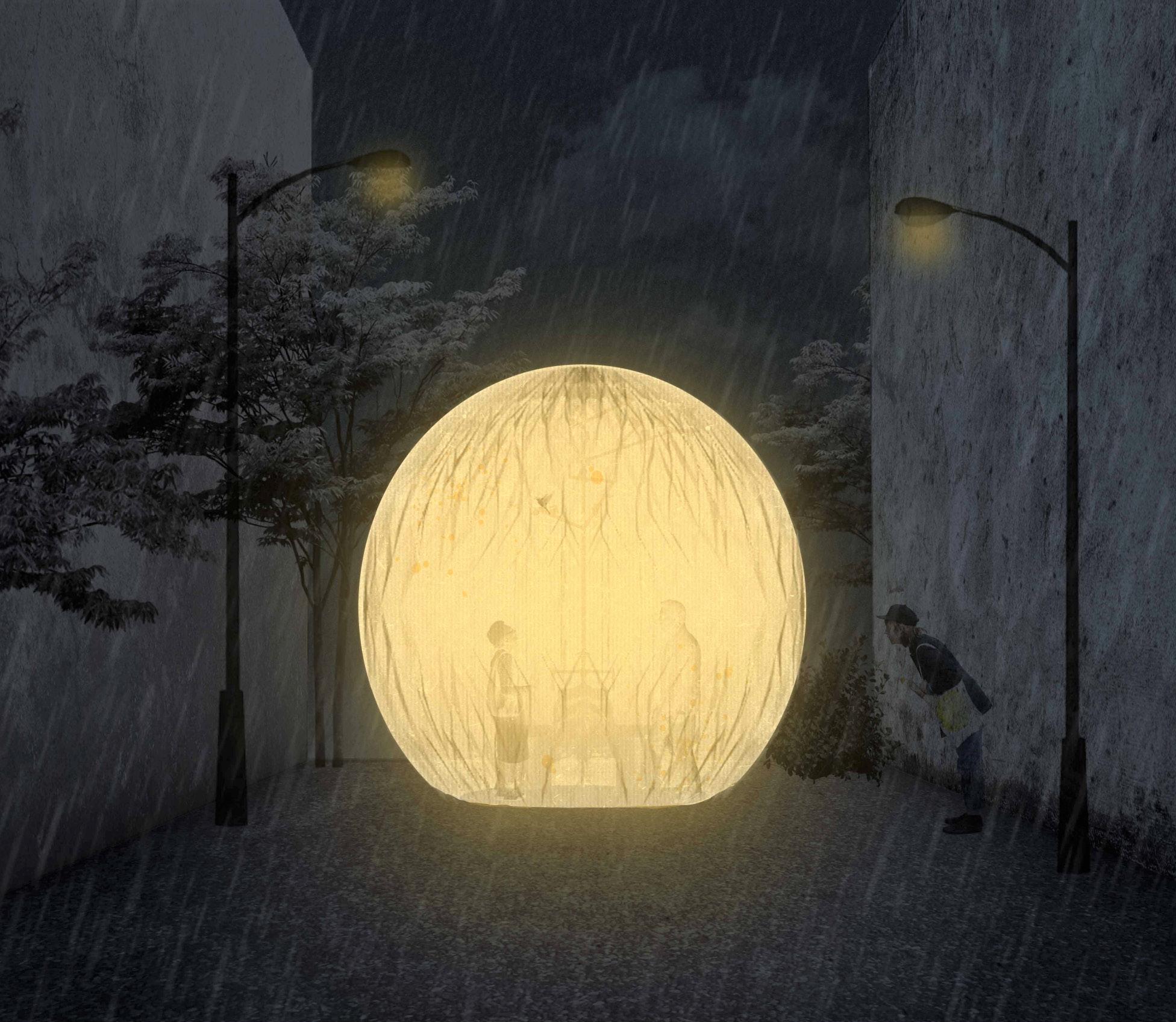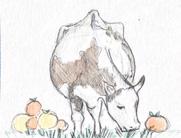
EX 01: STORIES FROM A SPARROW
Date: Winter 2023 | 5 weeks


Date: Winter 2023 | 5 weeks
focuses on the ways that recycled materials become generators of space and effect. We were asked to design an enclosure that would encompass a Larry VS Harry - Builtt Cargo Bike that would occupy downtown Vancouver’s Blood Alley, creating a small realm for a fortune telling alchemist.
Our fortune teller is a man and his sparrow, this practice is commonly seen in China where a small java sparrow picks a total of three cards to tell a customer’s fortune. While this practice is usually very transactional, we wanted to create a more intimate and mystical space for storytelling. Tracing paper, wax and orange peels were the materials of choice. Inclusion of the orange peels stems from belief that oranges bring good luck, and to further ehance the formal aspect of the spherical orange.
Wax was used to melt the orange peels onto paper to provide waterproofing, creating transluncent sheets of waterproof tracing paper that allowed the light within to luminate the dark alley. The technique of folding the paper allowed the desired rounded form to take shape as well as the expanding and collapsing of the enclosure as a whole for transportation. Besides creating a transportable outer shell, we wanted the tables and chairs that were to be used inside the space to be collapsible as well.





The fortune telling ritual revolves around the Java Sparrow. The bird firstly selects a zodiac card that coordinates with the customer’s year of birth. The customer then selects a number card that coordinates with a story. The story is used to dictate the customer’s fortune by conveying a specific meaning or message.
































1. Initial observations about the fortune telling practice including subject, atmosphere, and what was the bigger underlying goal we were trying to achieve.

2. Discussions and iterations from our formal inspirations. A large topic of conversation was how the orange would appear from the outside: would it be solid? Transparent? How much of the inside would be visible to visitors?



3. Our most successful iteration was a sphere created from folding along a measured grid to form pleats onto a sheet of thin paper which allowed it to contract and expand. One sheet of folded paper could then be separated into separate “peels”, when adhered back together, the sphere form returns. The folding would aid in the take down and set up of the shell while maintaing the circular form.

Initial recycled tracing paper testing.

One phase of our paper testing was creating our own paper out of waste paper and orange peels. Although this technique allowed for the recycled paper and orange peels to be joined into one sheet, it was brittle and difficult to fold.

Folded paper gives more structural rigidity while also providing the structure with the ability to collapse and expand. This allows all parts of the structure to be taken apart and transported on the bike.

Tension structure mimicking the form of a tree conceptually adds to the space as a place for conversation while also providing additional structural support.

Wax and orange peels melted on paper for waterproofing.

Tension structure can be collapsed.
Assembly Sequence







Disassembly Sequence
Thank you
